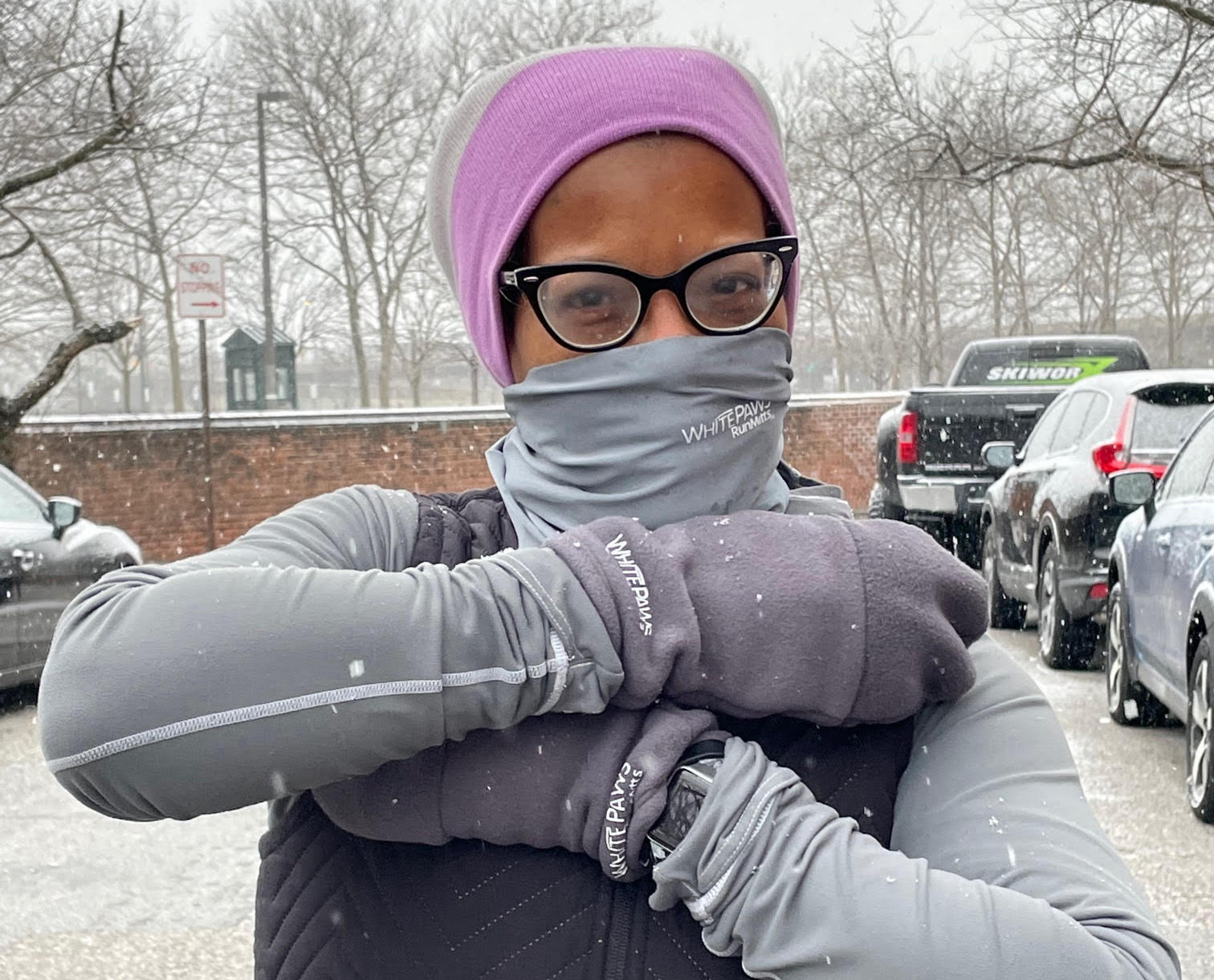Traditionally, a person who wants to start a gear company has to take the traditional track through design or business school and then serving time working for other companies, until he or she brave enough to branch out.
Susan Clayton’s entrepreneurship journey was different. In just five years, her brand called WhitePaws RunMitts, which makes mittens for runners, has managed to land placements in some of the biggest running magazines in the world. Even better, big retailers like REI have taken notice. This year, REI included WhitePaws RunMitts in its fall collection—the biggest exposure yet for a fledgling brand that’s quickly gaining popularity across the outdoor industry.
We had the chance to chat with Clayton about her business and what lessons she’s learned through building it. Below is an edited version of our conversation.
What’s the story of WhitePaws RunMitts’ beginnings?
I was a running coach with a group called Back on My Feet, and we met most mornings, regardless of weather. I couldn’t find mittens or gloves that kept both my fingers and my thumbs warm. One morning, I saw one of my friends running with socks on his hands, and I thought to myself, “I can make something better than that.” I started with a prototype knitted product, but realized that wasn’t working, so moved to fleece. Once I came up with a couple prototypes, I took it to a patent attorney. Three years later, it came out. We’ve been steadily growing since 2016.
Was there anything that was crucial to the early stage of WhitePaws RunMitts that helped you get off the ground?
At that time, I owned a hair salon and was already in business for myself. Because of that, I didn’t have that hesitancy to just jump in and try something. I’ve always had the philosophy that, if it doesn’t work, just do something else. I’ll try it, and if it doesn’t work, oh well! I’ll just move to something else.
Your Maryland-themed collection is fully sourced and produced in the U.S. How important is that kind of commitment to you?
When I first started the company, I didn’t really know what I was doing. Staying close, and being able to talk to people that were close by, helped out a lot. People are always asking, “Why don’t you produce offshore?” To me, it’s not as easy. As a small company, it’s hard doing onshore, but it’s even harder to go offshore and making those connections. When I started, I just wanted to be a small company—I just wanted to sell mittens! I didn’t think I needed to grow bigger. As I am growing bigger, I still like those small connections where I can talk to people. It’s a nicer feeling, knowing your manufacturer and knowing you’re helping produce jobs for your community.
For example, last year during the pandemic, I was looking to make a good mask to use while running. I talked to my manufacturer in New York City, and asked her if she had any fabrics that would work. She sent me some prototypes, and I thought they were perfect. Because I hit the market early, they were easy to sell. And having the manufacturer here in the States, I had turnover in a day. I could call her and say “I need stuff tomorrow,” and she would have them.
What was the process of getting REI to include your product in its fall collection?
2020 was a bad year for a lot of things, but there was also some good that came out of the pandemic—especially the BLM movement. People were looking for smaller, BIPOC companies to highlight. I got a lot of press during that time. In February, there was an article written about me in The Baltimore Sun, and the next day I got an email from REI. A lot of companies during that time were coming out with mission statements about diversity and inclusion, but not really following through. REI actually backed it up, and was really focused on including more people of color and small businesses in their collections. I also had a product they could get behind.
There were definitely a lot of setbacks, because I didn’t really know what I was doing. I had some consultants in Baltimore that really helped me scale up to REI. We read over the guidelines, got new packaging, and looked at how to produce it in an efficient and sustainable way. They’ve been nothing but helpful in this whole process.
What are your plans for the future of WhitePaws?
Can I just sell mittens? I want to be the Bombas of mittens, you know? We have the Maryland flag design coming next year, but I want to do more. Just to be able to produce different designs, hit the artist community to come up with new designs each season, as opposed to trying to be more innovative for the sake of innovation. We just want to make a really good product. I don’t want to keep adding stuff to the company for the sake of adding it, I want to make something that’s beneficial to my community, the running and outdoor community. Products that are functional, not necessarily the “newest” or the “greatest.” Hopefully everyone under the sun will eventually want WhitePaws mittens.
Does “everyone under the sun” include international customers?
I have sold internationally before, but my idea of selling internationally is selling a bulk order to a distributor in another country, B2B rather than B2C. It takes forever to ship internationally, and I hate when someone doesn’t get something from me. But I’d love to go international.
What advice would you give others with similar startup ideas?
Do a lot of research first. One of the mistakes I made was that I didn’t do enough research when I first started. I went in thinking that just selling mittens wouldn’t be too difficult. But it’s not just selling. It’s the backend of it—the manufacturing, the packaging, the setups of e-commerce and a website, and getting people to find them. It’s a lot of work.
But I would definitely say never shy away from trying. If it doesn’t work, you just move onto something else. Don’t let somebody try to talk you into not doing something. A simple idea can be life changing, or world changing. Never think that you can’t do something. There’s always a way to get your idea out there to the world.


